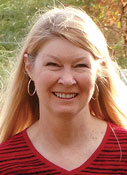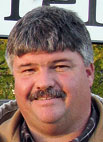 Winemaking has been around for perhaps as long as 6,000 years. Winemaking in Missouri dates back to the mid-1800s when Germans populated the Hermann, Mo., area, bringing grape varieties with them. For a time, Missouri ranked among the top states for wine production.
Winemaking has been around for perhaps as long as 6,000 years. Winemaking in Missouri dates back to the mid-1800s when Germans populated the Hermann, Mo., area, bringing grape varieties with them. For a time, Missouri ranked among the top states for wine production.
For Marshall and Kristin Snodgrass, their winemaking experience goes back about 10 years.
“But 25 to 30 years ago, I started thinking about it,” Marshall recalls, “It was something enjoyable, and I liked wines.”
The Snodgrasses own 431 acres in Webster County, Mo. But only 7 ½ acres of this wooded and hilly terrain are planted in grapes; around 5,000 vines in seven varieties. They have named their business Lambs and Vines Winery because of their integration of sheep into the wine operation. While the family has been making wine for a decade, the winery just opened in May.
Mother Nature throws challenges at the Ozarks every year.
“We’ve had a lot of problems. There are reasons why Missouri is not ideal to grow grapes,” Kristin said.
Japanese beetles, anthrachnose, high humidity and fungus are among the pests and pestilence.
“One year we lost our entire crop,” Marshall added. “A warm spring, everything was growing great, new shoots, and then we had a really hard freeze.”
Explaining wine production takes an encyclopedia. Here’s a short version: plant, grow, harvest, press or crush, add yeast, put the juice in tanks and eventually, you have wine.
Son, Lucas, who works off the vineyard for the U.S. Postal Service, has his bachelor’s and master’s degrees, plus he’s completed VESTA’s viticulture program. Marshall, also works off the farm, running a dental clinic in Marshfield, Mo.
He would love to get 3 tons of grapes per acre. This year he’ll likely get 250 pounds.
“Two years ago it was a lot better. The winters of 2014 and 2015 set us back. But everything is coming back beautiful.”
Fifteen pounds of grapes will typically produce one gallon or five bottles of wine. In 2013, the winery produced 4,300 bottles, split between Cabernet Franc, Chambourcin, Dornfelder, Dry Viognier, Dry Vidal, Semi-Dry Traminette and Semi-sweet Vidal.
“I was looking for something other than the typical Missouri grape.” Marshall recalled. “I wanted to create more of a dry wine approach.”
In a dry wine, the sugar in the grapes has been converted to alcohol, making it not sweet. Semi-dry has more residual sugars.
The turnaround from starting a vineyard to getting a crop is much slower than many agriculture ventures.
“It takes about three years from the time of planting until you actually get a harvest,” explains Kristin.
The Snodgrasses tried to grow grapes organically for several years.
“We tried raw milk, some strange things. We searched everywhere for solutions,” Kristin explained.
“We picked beetles off by hand, then tried chickens,” Marshall added.
Kristin notes their current practice is, “spraying only when necessary.”
Kristin learned people were attempting to use geese or sheep in their vineyards, but she found an article that mentioned Babydoll Southdown sheep.
“I liked the idea of sheep better than geese,” she said.
Today about 60 registered adult Olde English Babydoll Southdown sheep, provide valuable labor, and a product.
“Southdown wool is very stretchy. Put through the washer it remains elastic and doesn’t shrink,” Kristin said, adding that she has more than enough wool for herself so she started selling wool products.
One wall of the tasting room displays hand-dyed yarn for purchase, along with other items made on the farm or grown locally.
Those 60 sheep eat the undergrowth in the vines and do much of the mowing; rotating in-and-out based on spraying, or other factors. The heritage breed Southdowns are short and stocky, ideally suited for their work. They don’t stand up on their hind legs, and with wire placement at 45 inches high, the grapes stay out of reach.
From planting vines to selling wine, everything is done on the Snodgrass property, by family. While Marshall and Lucas handle winemaking, Kristin and Natasha take care of the sheep. Natasha also bakes the fresh bread sold in the tasting room. And of course there’s that wool yarn.
“These were hobbies. We are making our lifestyle what we love to do and would do anyway,” Kristin said.
Wineries often have a reputation for events, weddings, bands playing and the like, but the Snodgrasses have taken a different approach.
“We are farmers,” Kristin explained. “We are trying to keep this for what it is, a place where people can come and enjoy an afternoon.”
“Knitters can come sit, sip and knit,” Marshall said. “Our visitors seem to enjoy the simplicity of this escape to the country, sipping wine on the patio while the sheep peacefully munch among the vines.”







